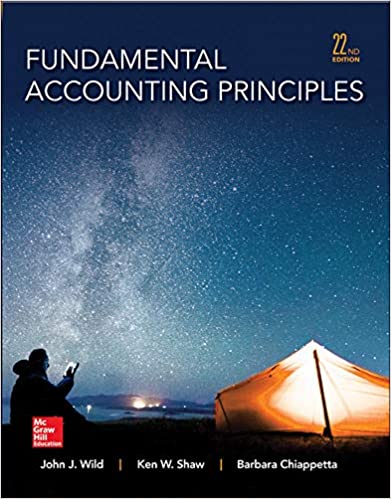
Fundamental Accounting Principles 22th Edition by John Wild ,Ken Shaw,Barbara Chiappetta
Edition 22ISBN: 978-0077862275
Fundamental Accounting Principles 22th Edition by John Wild ,Ken Shaw,Barbara Chiappetta
Edition 22ISBN: 978-0077862275 Exercise 18
Using the data from Problem 18-2A and the inventory information for Leone Company below, complete the requirements below. Assume income tax expense is $233,725 for the year.

Required
1. Prepare the company's 2015 schedule of cost of goods manufactured.
2. Prepare the company's 2015 income statement that reports separate categories for ( a ) selling expenses and ( b ) general and administrative expenses.
Analysis Component
3. Compute the ( a ) inventory turnover, defined as cost of goods sold divided by average inventory, and ( b ) days' sales in inventory, defined as 365 times ending inventory divided by cost of goods sold, for both its raw materials inventory and its finished goods inventory. (To compute turnover and days' sales in inventory for raw materials, use raw materials used rather than cost of goods sold.) Discuss some possible reasons for differences between these ratios for the two types of inventories. Round answers to one decimal place.
Reference: Problem 18-2A
The following calendar year-end information is taken from the December 31, 2015, adjusted trial balance and other records of Leone Company.

Required
1. Identify and classify each of the costs above as either a product or period cost.
2. Classify each of the product costs as either direct materials, direct labor, or factory overhead.
3. Classify each of the period costs as either selling or general and administrative expenses.

Required
1. Prepare the company's 2015 schedule of cost of goods manufactured.
2. Prepare the company's 2015 income statement that reports separate categories for ( a ) selling expenses and ( b ) general and administrative expenses.
Analysis Component
3. Compute the ( a ) inventory turnover, defined as cost of goods sold divided by average inventory, and ( b ) days' sales in inventory, defined as 365 times ending inventory divided by cost of goods sold, for both its raw materials inventory and its finished goods inventory. (To compute turnover and days' sales in inventory for raw materials, use raw materials used rather than cost of goods sold.) Discuss some possible reasons for differences between these ratios for the two types of inventories. Round answers to one decimal place.
Reference: Problem 18-2A
The following calendar year-end information is taken from the December 31, 2015, adjusted trial balance and other records of Leone Company.

Required
1. Identify and classify each of the costs above as either a product or period cost.
2. Classify each of the product costs as either direct materials, direct labor, or factory overhead.
3. Classify each of the period costs as either selling or general and administrative expenses.
Explanation
Cost of goods manufactured
1.
Cost pert...
Fundamental Accounting Principles 22th Edition by John Wild ,Ken Shaw,Barbara Chiappetta
Why don’t you like this exercise?
Other Minimum 8 character and maximum 255 character
Character 255


